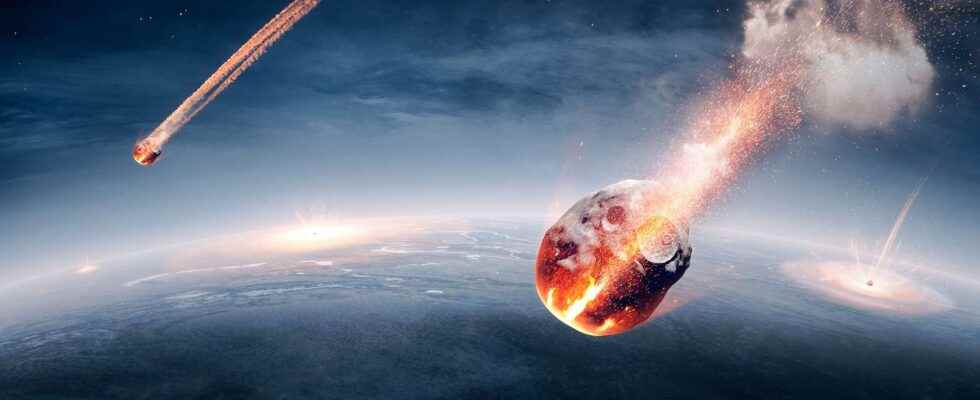You will also be interested
[EN VIDÉO] 5 questions about meteorites They would have caused the disappearance of the dinosaurs and their craters adorn the surface of the Earth. Every day, the planet is bombarded by hundreds of meteorites.
In southeastern Wyoming, USA, scientists have discovered a whole series of small craters, 10 to 70 meters in diameter. Imprinted in sediments of Permian age (280 million years), this multitude of impact structures was first attributed to the disintegration of a large asteroid when entering the atmosphere. Indeed, no major crater is visible in the landscape of the surrounding region. However, over the course of field investigations, it appeared that the extension of the field of impacts is far too vast to be explained by this hypothesis.
A ballistic study to trace the origin of the craters
Like detectives, the scientists then conducted a ballistic study on each small crater in order to trace its origin. Thirty-one impacts have thus been screened, but more than 60 other structures could also be part of the crater field. The distribution of the impacts first shows that the craters are not randomly distributed: they form several small groups, which define a corridor 30-45° pointing in a specific direction. Craters also have a morphology specific in ellipse. This shape indicates that the objects causing the craters hit the ground at a relatively flat angle. This data thus enabled the researchers to reconstruct the trajectory of the objects. Taken together, these trajectories show a radial pattern: the objects at the origin of the crater field would all come from a single source.
Brands of major impact
All the results show that the dozens of small craters identified in Wyoming would therefore not be linked to the disintegration of a asteroid in the atmosphere but would result from blocks ejected during a major impact. These are therefore secondary craters, scattered around a main crater, in the form of a crown of ejecta. While this type of formation is very common on the Moon Where on Mars for example, it had never yet been observed on Earth.
This absence is to be associated mainly with the processes of erosion, particularly effective on our Planet, which tend to quickly erase the traces of meteorite impacts, especially the smaller ones. tectonic activity and sedimentation cause the Earth’s surface to be constantly “refreshed” as well, the old scars being quickly erased. We must also not forget that the earth’s surface is, and has always been, mainly occupied by oceans. There is therefore a statistically greater chance than a meteorite falls into an ocean than onto a continent, thus leaving behind little or no trace.
Blocks of several meters projected over 200 km
The main crater at the origin of the secondary craters of Wyoming has disappeared. Thanks to the calculations of trajectories and numerical simulations, the scientists managed to model the formation of the craters and to find the location of the main crater. Their results, published in the bulletin of the Geological Society of America, suggest that the main crater, now buried under younger sediments, was originally 50 to 65 kilometers in diameter. The meteoritic impact would have thrown blocks four to eight meters wide over 150 to 200 kilometers, leading to the formation of the secondary crater field. The debris would thus have struck the still unconsolidated sediments at a speed from 700 to 1,000 m/s.
Interested in what you just read?
